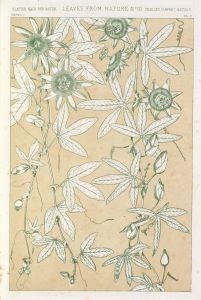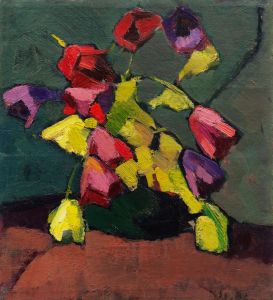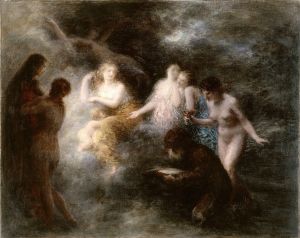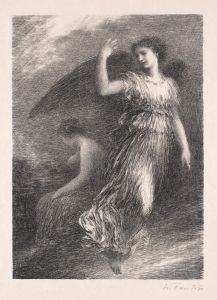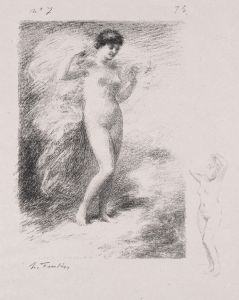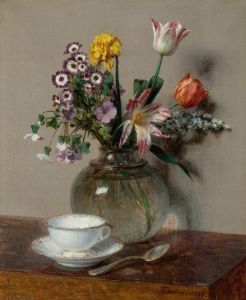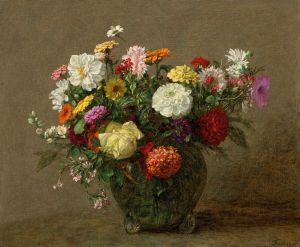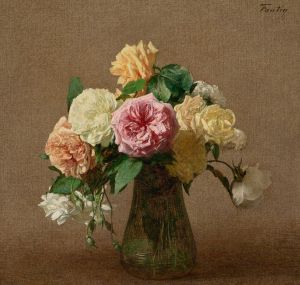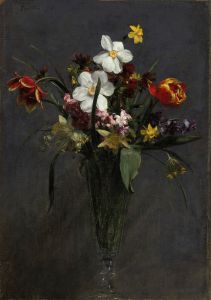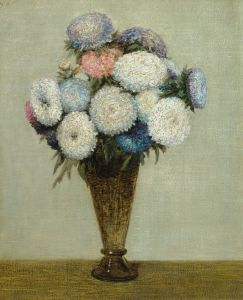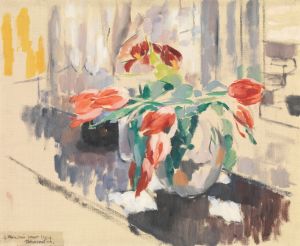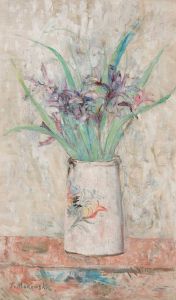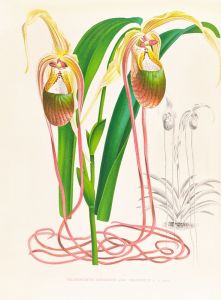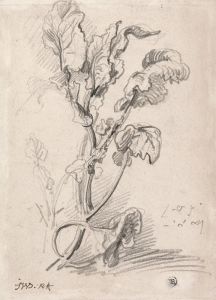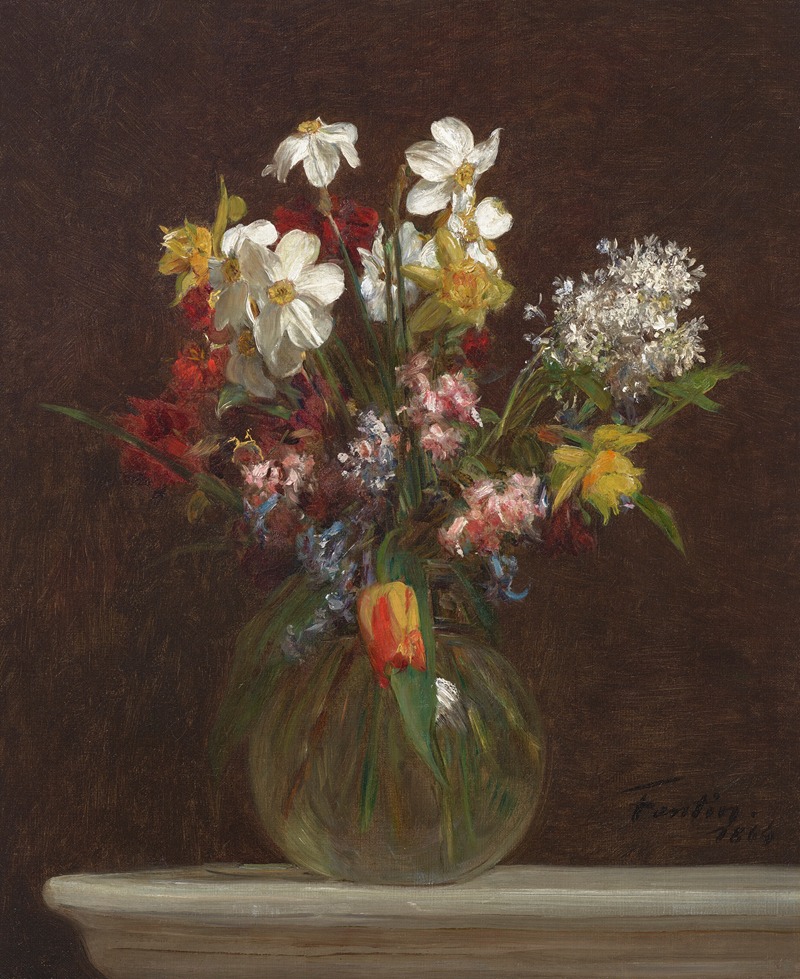
Narcisses blancs, jacinthes et tulipes
A hand-painted replica of Henri Fantin-Latour’s masterpiece Narcisses blancs, jacinthes et tulipes, meticulously crafted by professional artists to capture the true essence of the original. Each piece is created with museum-quality canvas and rare mineral pigments, carefully painted by experienced artists with delicate brushstrokes and rich, layered colors to perfectly recreate the texture of the original artwork. Unlike machine-printed reproductions, this hand-painted version brings the painting to life, infused with the artist’s emotions and skill in every stroke. Whether for personal collection or home decoration, it instantly elevates the artistic atmosphere of any space.
Henri Fantin-Latour, a renowned French painter, is celebrated for his exquisite still life paintings and portraits. One of his notable works is "Narcisses blancs, jacinthes et tulipes," which translates to "White Narcissi, Hyacinths, and Tulips." This painting exemplifies Fantin-Latour's mastery in capturing the delicate beauty of flowers with remarkable precision and sensitivity.
Fantin-Latour was born in 1836 in Grenoble, France, and he developed an early interest in art, influenced by his father, who was also a painter. He moved to Paris to study at the École des Beaux-Arts and later honed his skills by copying works at the Louvre. Although he initially struggled to gain recognition, his talent for still life painting eventually garnered attention and acclaim.
"Narcisses blancs, jacinthes et tulipes" is a testament to Fantin-Latour's ability to render floral compositions with a sense of realism and elegance. The painting features a harmonious arrangement of white narcissi, hyacinths, and tulips, showcasing the artist's keen eye for detail and his ability to convey the subtle interplay of light and shadow. The flowers are depicted with meticulous attention to their textures and colors, creating a lifelike representation that invites viewers to appreciate their natural beauty.
Fantin-Latour's approach to still life painting was influenced by the Dutch masters of the 17th century, whose works he admired for their precision and clarity. However, he infused his own style into his paintings, characterized by a softer palette and a focus on the harmonious arrangement of elements. This approach set him apart from his contemporaries and established him as a leading figure in the genre of still life painting.
Throughout his career, Fantin-Latour maintained a close relationship with the Impressionist movement, although he did not fully embrace its techniques. He was friends with several prominent Impressionist artists, including Édouard Manet and Edgar Degas, and he participated in the first Impressionist exhibition in 1874. Despite these connections, Fantin-Latour remained committed to his own artistic vision, which was rooted in realism and a deep appreciation for the beauty of nature.
"Narcisses blancs, jacinthes et tulipes" reflects Fantin-Latour's dedication to capturing the ephemeral beauty of flowers. His meticulous technique and attention to detail allow viewers to experience the vibrancy and delicacy of the blooms, as if they were freshly picked. The painting is a celebration of nature's elegance and a testament to the artist's skill in rendering its intricate forms.
Fantin-Latour's still life paintings, including "Narcisses blancs, jacinthes et tulipes," continue to be admired for their timeless beauty and technical excellence. His work has been exhibited in major museums and galleries around the world, and he is regarded as one of the foremost painters of floral still lifes in art history. Through his paintings, Fantin-Latour invites viewers to pause and appreciate the simple yet profound beauty of the natural world, captured with unparalleled skill and sensitivity.





